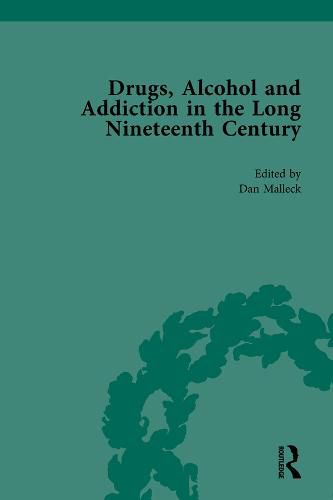Readings Newsletter
Become a Readings Member to make your shopping experience even easier.
Sign in or sign up for free!
You’re not far away from qualifying for FREE standard shipping within Australia
You’ve qualified for FREE standard shipping within Australia
The cart is loading…






This collection captures key themes and issues in the broad history of addiction and vice in the Anglo-American world. Focusing on the long nineteenth-century, the volumes consider how scientific, social, and cultural experiences with drugs, alcohol, addiction, gambling, and prostitution varied around the world. What might be considered vice, or addiction could be interpreted in various ways, through various lenses, and such activities were interpreted differently depending upon the observer: the medical practitioner; the evangelical missionary; the thrill seeking bon-vivant, and the concerned government commissioner, to name but a few. For example, opium addiction in middle class households resulting from medical treatment was judged much differently than Chinese opium smoking by those in poverty or poor living conditions in North American work camps on the west coast, or on the streets of Soho.
This collection will assemble key documents representing both the official and general view of these various activities, providing readers with a cross section of interpretations and a solid grounding in the material that shaped policy change, cultural interpretation, and social action.
$9.00 standard shipping within Australia
FREE standard shipping within Australia for orders over $100.00
Express & International shipping calculated at checkout
This collection captures key themes and issues in the broad history of addiction and vice in the Anglo-American world. Focusing on the long nineteenth-century, the volumes consider how scientific, social, and cultural experiences with drugs, alcohol, addiction, gambling, and prostitution varied around the world. What might be considered vice, or addiction could be interpreted in various ways, through various lenses, and such activities were interpreted differently depending upon the observer: the medical practitioner; the evangelical missionary; the thrill seeking bon-vivant, and the concerned government commissioner, to name but a few. For example, opium addiction in middle class households resulting from medical treatment was judged much differently than Chinese opium smoking by those in poverty or poor living conditions in North American work camps on the west coast, or on the streets of Soho.
This collection will assemble key documents representing both the official and general view of these various activities, providing readers with a cross section of interpretations and a solid grounding in the material that shaped policy change, cultural interpretation, and social action.